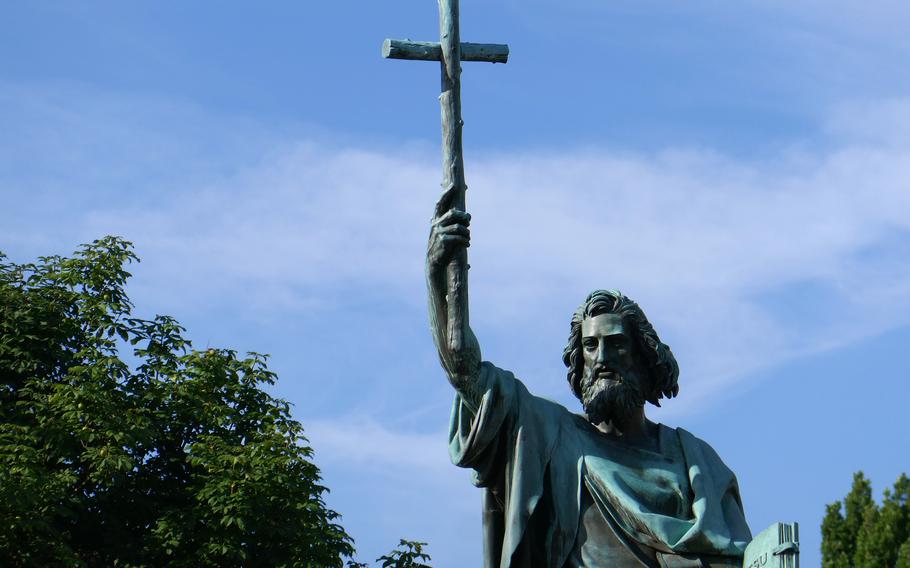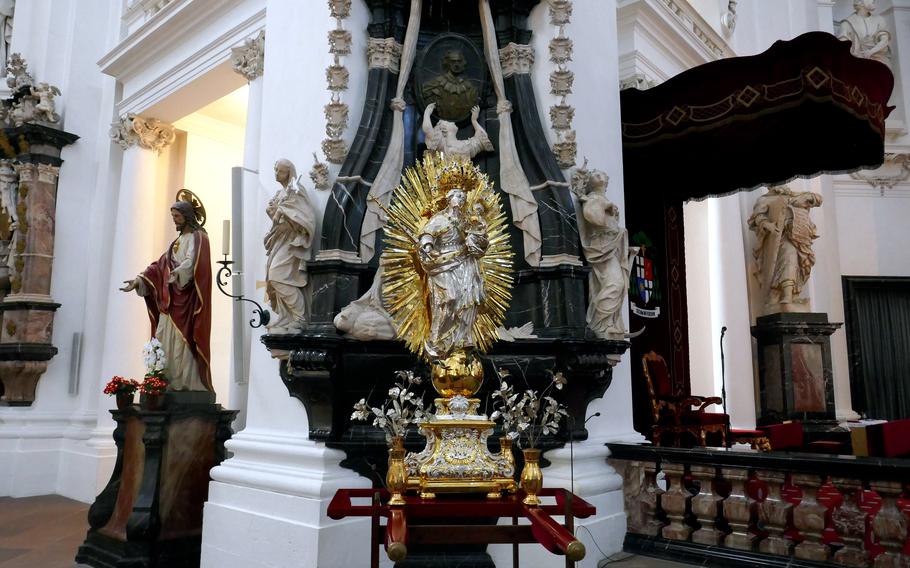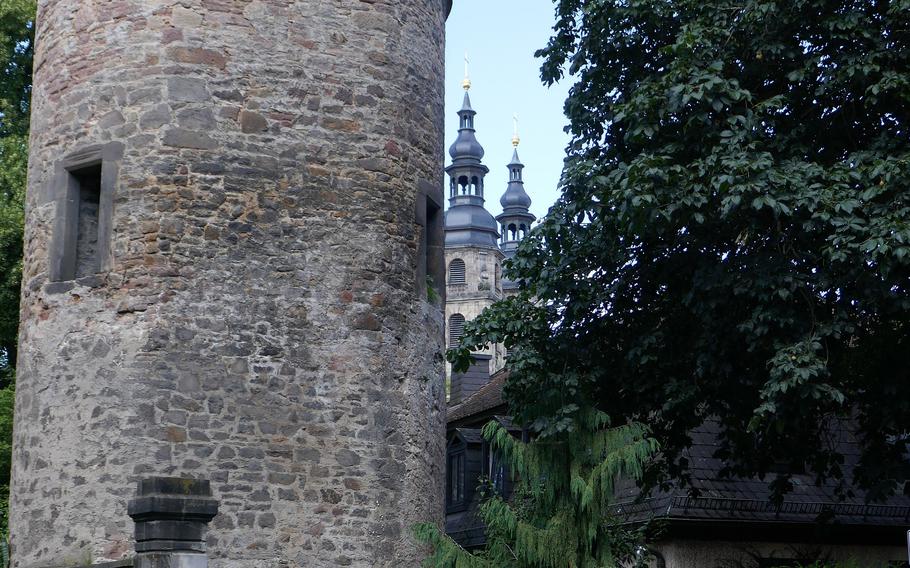
Fulda is the burial place of St. Boniface, the eighth-century missionary and bishop credited with bringing Christianity to Germany. (Michael Abrams/Stars and Stripes)
Many Americans, especially those over 40, may have heard of the Hessian city of Fulda because of a nearby feature of the countryside, the so-called Fulda Gap.
Here in a corridor between two mountain ranges, the Soviets and their Warsaw Pact allies would supposedly storm through to invade the West. The fall of the Iron Curtain in 1989 put an end to that Cold War scenario.
Otherwise, most people know this central German city for its Baroque architecture, historic churches, medieval old town and lush parks.

The opulent interior of the Baroque basilica in Fulda, Germany. The church was built in the early 18th century and is dedicated to St. Boniface. (Michael Abrams/Stars and Stripes)
Fulda dates to the mid-eighth century, when a monk named Sturmius founded a Benedictine monastery here. The city has always had a close relationship with the Catholic Church, and it is still a bishop’s seat.
The church’s prince-abbots who lived here commissioned the construction of the Baroque buildings for which Fulda is famous.
Foremost is the cathedral, the Dom St. Salvator und Bonifatius, built between 1704 and 1712. The tomb of St. Boniface, the eighth-century missionary and bishop credited with bringing Christianity to Germany, is here and is a place of pilgrimage.
Across the street is the Stadtschloss, the former residence of the prince-abbots. Built in the early 18th century on the site of an earlier palace, it is today the city hall and a museum.
Its sumptuous interior is decorated in the Baroque and rococo styles. Three halls are of particular interest: the Imperial Hall, the Hall of Princes and the Hall of Mirrors.
Next to the Stadtschloss is the expansive residence garden, a great place to rest weary feet or to picnic. This Baroque orangerie was used for summer parties and receptions and for storage of the garden’s lemon and orange trees in winter, hence its name.
A stroll through the old town is an interesting mix of historical architecture. But first, take a look at St. Michael’s Church, to the right of the cathedral. The medieval building was constructed in the early ninth century. This round Carolingian chapel is one of the oldest church buildings in Germany.
The imposing old half-timbered rathaus, or city hall, was built before 1500. The ground floor, now a glassed-in shop, was once an open-sided covered market.
Across from it is the towering St. Blasius, the city’s parish church. Built in the late 18th century, it was the last major Baroque building constructed in Fulda.
The cobblestone lanes of the old town take you past shops, taverns, restaurants and cafes down to the Hexenturm, or Witches Tower. It dates to the 12th century and was once part of the town’s medieval fortifications.
Despite its name, it was not used to imprison women charged with witchcraft but was once indeed used as a women’s prison.

The Hexenturm, or Witches Tower, in Fulda, Germany. It dates to the 12th century and was part of the town’s medieval fortifications. Despite its name, it was not used to imprison women charged with witchcraft but was once used as a women’s prison. (Michael Abrams/Stars and Stripes)
Behind it is the small but wonderful dahlia garden. In summer, more than 30 types of the flower are in bloom.
There’s not much left of American Fulda, once home to the 14th and 11th Armored Cavalry Regiments. Some buildings of the former Downs Barracks are still used by the German police.
A softball field and tennis courts also remain.
Housed in a former military installation building is the Blackhorse Museum, which traces the history of the cavalry regiments and American military life in Fulda.
And the control tower of Sickels Army Airfield still stands as a reminder of the U.S. military presence in Fulda.
Directions: Fulda is about a two-hour, 90-mile drive from Wiesbaden via autobahn A66, A3 and A66 again.
Times: Anytime, but the nicest times are when the weather is good so you can enjoy the old town and parks. The basilica is open from 10 a.m. to 6 p.m. Monday through Friday, 10 a.m. to 3 p.m. on Saturday and 1 p.m. to 6 p.m. on Sunday. From November through March, it closes at 5 p.m. on weekdays.
Costs: Except for parking, just what you spend on food, drinks and shopping. Parking garage costs vary by location.
Food: Plenty of restaurants in all price classes downtown.
Information: The city’s website is tourismus-fulda.de. The Blackhorse Museum website is blackhorse-museum.de.